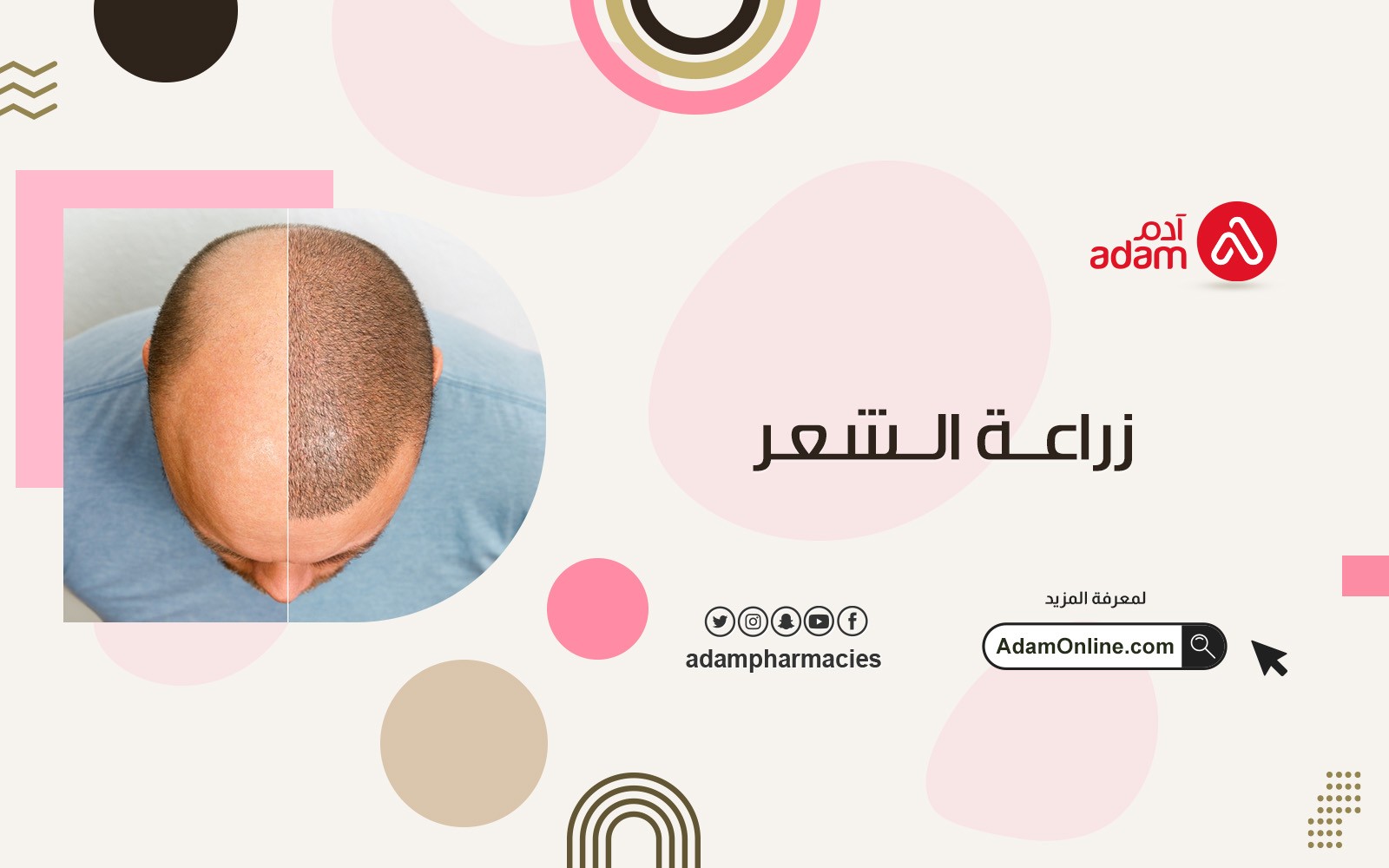Hair transplantation

Many people suffer from problems in the scalp and hair, and these problems cause insomnia and discomfort for many people; Because this negatively affects their general mood, they look for a way to treat their hair problems, and they make sure that this method is fast and safe at the same time.
There are many ways to treat hair and head problems, including:
Pills to solve hair problems.
Foods that contribute to the maintenance of hair.
Shampoo to solve hair problems.
Spray to solve hair problems.
Foaming solution for hair problems.
Creams to solve hair problems.
Hair Transplant.
Hair transplantation
is one of the fastest ways to treat the problem of hair loss; Therefore, it is accepted by many due to its effectiveness and speed
. The process of hair transplantation is of two types:
1- FuT laser hair transplantation).
2- Hair Transplant by FUE (FUE).
Other sub-techniques also used for hair
transplantation falls under them: 1- Direct Transplantation (DHI).
2- Artificial hair transplantation.
But these two types are the main.
Hair transplant operations are characterized by being performed in the doctor’s office using local anesthesia.
But before talking about hair transplant operations, we must know something important, which is:
When should hair transplantation be performed?
Hair transplantation has a certain age, and it is better for a person who suffers from head hair problems to try traditional hair treatment methods of various types such as (hair treatment vitamins - natural foods that nourish hair - shampoos that help protect and treat hair - hair loss treatment sprays - liquids). Foaming helps to solve hair problems).
This process bears fruit with some people:
1- Men who suffer from genetic baldness.
2- Individuals with burns or injuries to the scalp that were one of the causes of excessive hair loss.
3- Women who suffer from thinning hair and lack of density.
4- People who suffer from hair loss as a result of chemotherapy, or taking certain types of drugs.
Doctors recommend an appropriate age for hair transplantation, which is 30 years, and the minimum age is 25 years, so it is forbidden to resort to hair transplants before this age.
Conditions for undergoing hair transplantation:
A person with hair loss must first consult a doctor before performing a hair transplant, and only the doctor is able to determine whether the operation is an appropriate option or not.
He informs the doctor of his medical history and the medications he is taking.
The doctor must inform the patient of his expectations for the operation; Until it is determined whether the process suits the person or not.
The age of those who resort to hair transplantation should not exceed 25 years.
They must have a donor area for hair, containing healthy follicles.
- That the donor area suffers from a hair disease such as baldness and alopecia.
- Do not take blood thinners or blood thinners before the operation.
Types of hair transplant techniques.
1- FUT hair transplant technique.
In this technique, the surgeon cuts approximately 15 centimeters from the hair to 25 centimeters.
This area is taken from the back of the scalp from a hair-dense area, and then the surgeon sews up the wound resulting from taking this slice, and hides it with the hair surrounding it. Each of them contains one or a few hairs.
What determines the number of patches in terms of shortness, fewness, or in terms of area is the type of hair, its color, its condition and the area that needs to be transplanted.
2- FUE technique:
In this technique, the doctor resorts to shaving part of the back of the head, and then removes the hair follicles separately.
He cleans the targeted place with hair, then anesthetizes it and then makes holes using a needle or scalpel.
Then he places a small patch of hair or follicles in each opening. This process may take between 4 hours to 8 hours, depending on the area targeted to be transplanted.
These sessions may be decided according to the results or according to the desired hair density. The person who grows his hair goes about his normal life after each session, and then returns after that to complete his process until he finishes planting the desired places.
This process may take up to two years depending on the area of hair to be transplanted.
3- Direct Transplantation Technology (DHI):
This technique is one of the latest hair transplant techniques, as it is distinguished from others when compared to them, as it is relatively lower in cost, in addition to its short recovery period, and high success rate.
The advantage of this process is that during the procedure, there are no breaks between the hair follicles when transplanting, and this gives them a longer life, and helps them to retain their properties, and ensure their results.
This technique differs from the two previous techniques, as the doctor works in this technique to prepare the target area first before separating the hair follicles from it; So that it can be grown directly, and here the risks of exposure to mechanical and physical factors that could affect its health are reduced.
In the two previous techniques, the doctor takes hair follicles for transplantation and then prepares the target donor area.
4- Artificial hair transplantation:
This type of transplant differs from its predecessors because the doctor resorts to artificial hair, where the doctor resorts to
fine artificial fibers, which are very similar to natural hair transplantation, and this method succeeds with individuals who suffer from cases of complete baldness; Because there is no natural hair left in his head that can be used to plant and cover the bald areas on his head.
The doctor often resorts to this technique of implants based on the health status of the grower. If the patient's health condition is commensurate with the implant, this case will be safer and more successful.
Possible side effects after hair transplantation:
Some complications and side effects may occur after hair transplantation, such as:
loss of sensation in the areas where the hair was transplanted.
scarring on the head;
Sometimes bleeding occurs.
A feeling of itching or swelling in the head may occur after the operation.
Some may become infected after this process.
Hair may grow unusually so that the hair is heavy in the front and thinner in the back from the area from which the transplanted hair was taken, and this is contrary to nature.
Sometimes the hair does not grow in the used skin grafts, so the hair transplantation process needs to be repeated again.
Headaches may occur, which requires the transplanter to take analgesics.
Sometimes the doctor has to dress the implant head for two days.
Infections may occur in the implant, forcing the patient to take antibiotics, depending on the situation.
Precautions to be taken after the operation:
The process of hair transplantation does not have obvious, significant or painful side effects, if the grower takes some precautions:
- Do not use the comb or brush on the newly transplanted areas during the first three weeks.
The grower must wait for a few days before washing his hair after transplanting it.
Use mild shampoos, be careful, and stay away from heavy ones during the first weeks.
Do not wear hats and closed shirts unless permitted by the doctor.
The transplanter should refrain from exercising during the first week of the operation.
(All types of shampoo are available at Adam's Pharmacy)
To ensure the success of this process, the grower must take some precautions:
- Reducing anxiety levels, because they affect the process negatively.
- Sleeping well; Because not sleeping enough may affect the process negatively.
Drinking water in sufficient quantities; Because water maintains the freshness of the hair.
Exercising regularly, this maintains general health, as well as preserves the hair.
Maintain a healthy and balanced diet rich in hair vitamins.
- New hair grows within a few months, as 60% of the transplanted hair grows during the first 6 to 9 months.
Knowing and taking into account that the transplanted hair is affected by external factors over time; So the sower must take care of it.
We have mentioned the hair transplant process, its types, the conditions for undergoing it, the appropriate age for them, the negatives that may result from it, and the precautions that must be taken to obtain the best results and not result in side effects.





























